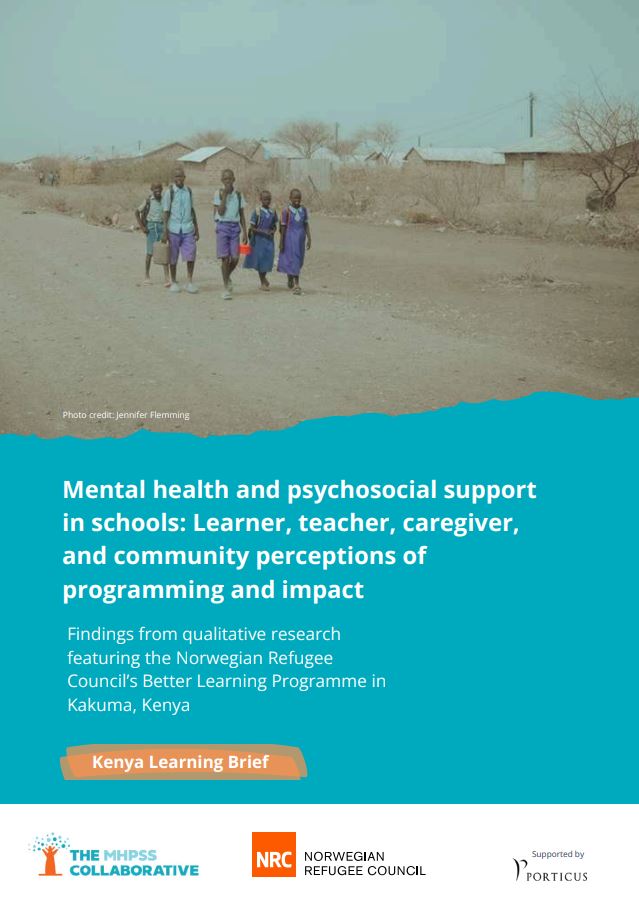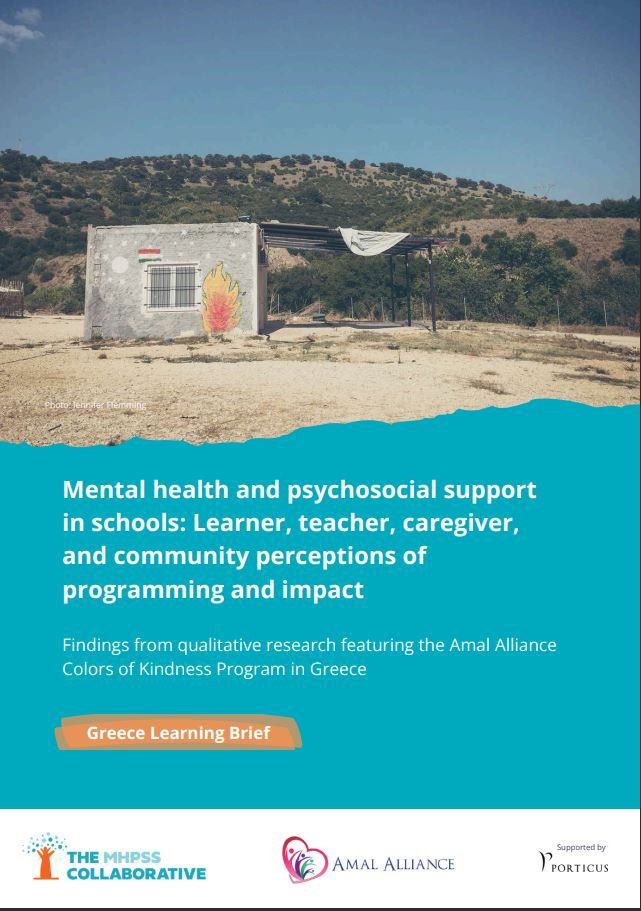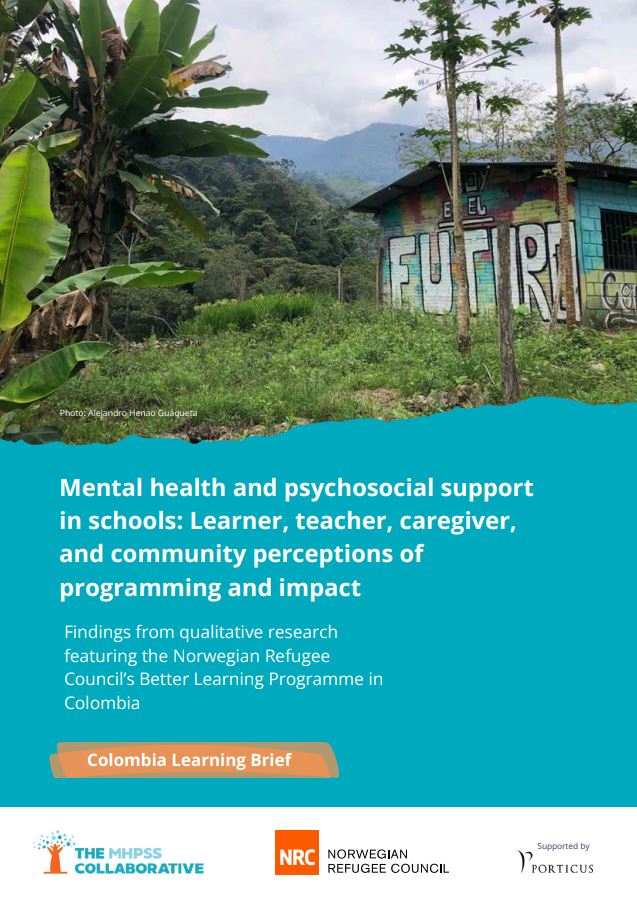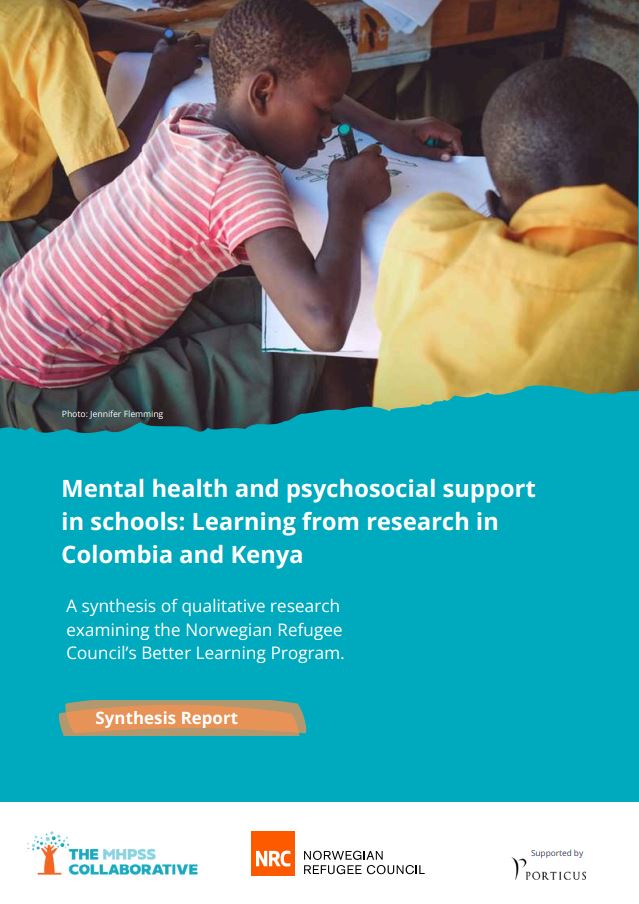Mental health and psychosocial support in schools: Learner, teacher, caregiver and community perception of programming and impact. Findings from qualitative research featuring the Norwegian Refugee Council’s Better Learning Programme in Kakuma, Kenya.
At the end of 2022, 40% of the nearly 110 million persons forcibly displaced globally were children under the age of 18. Displaced children face acute and chronic adversities that significantly threaten their mental health and psychosocial wellbeing. The urgent needs of children in humanitarian crises underpin various policies and programmatic approaches that include increasing attention to both mental health and psychosocial support (MHPSS) services broadly[3] and in education approaches specifically. MHPSS in education in emergencies (EiE), including social-emotional learning (SEL), has been identified as an important pathway to address both children’s mental health and psychosocial needs and to improve learning outcomes.
There is increasing recognition that quality education is reflected not just in academic outcomes such as literacy and numeracy, but also in those indicating learner psychosocial wellbeing. Learners are embedded within a context of specific relationships, environments, and systems that notably influence their daily lives, learning, and holistic wellbeing. These socio-ecological factors are complex and context-specific, and can have a significant impact on the efficacy of an intervention aimed at supporting children’s growth and learning.
Kenya has long been a host to refugees from neighbouring countries; in 2023 the number of registered refugees and asylum seekers within its borders was approximately 655,000. Refugees are spread across three primary camps (Dadaab, Kakuma, and Kalobeyei integrated settlement), and are also integrated into host communities in both urban and rural settings. As of September 2023, Kakuma and Kalobeyei (the sites of this research) hosted approximately 276,000 individuals. Kakuma hosts refugees from South Sudan, Somalia, the Democratic Republic of Congo, Ethiopia, Burundi, Sudan, Uganda, Eritrea, and others. Children make up approximately 55 percent of refugees in Kakuma.
Currently, all camps face challenges related to overcrowding, limited access to basic services (such as healthcare, adequate food, education, and clean water), and poor economic opportunities. Refugees often face significant mental health challenges due to the traumas they have experienced prior to arrival in Kenya, including exposure to violent conflict, displacement, and extreme loss. Many refugees suffer from conditions such as post-traumatic stress disorder (PTSD), depression, and anxiety. These challenges are exacerbated by the uncertainty of their situations, lack of resources, and limited access to healthcare, often leaving affected populations underserved.
This research set out to examine the enabling environments for MHPSS interventions delivered in education settings in humanitarian contexts, with specific focus on NRC’s BLP implemented in Kenya.



